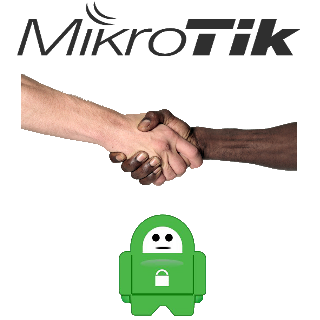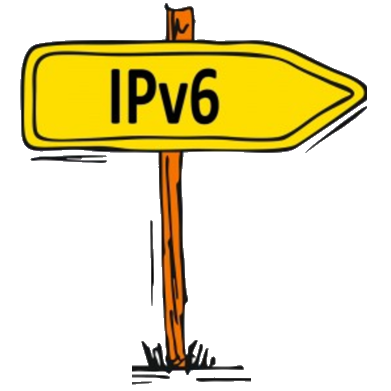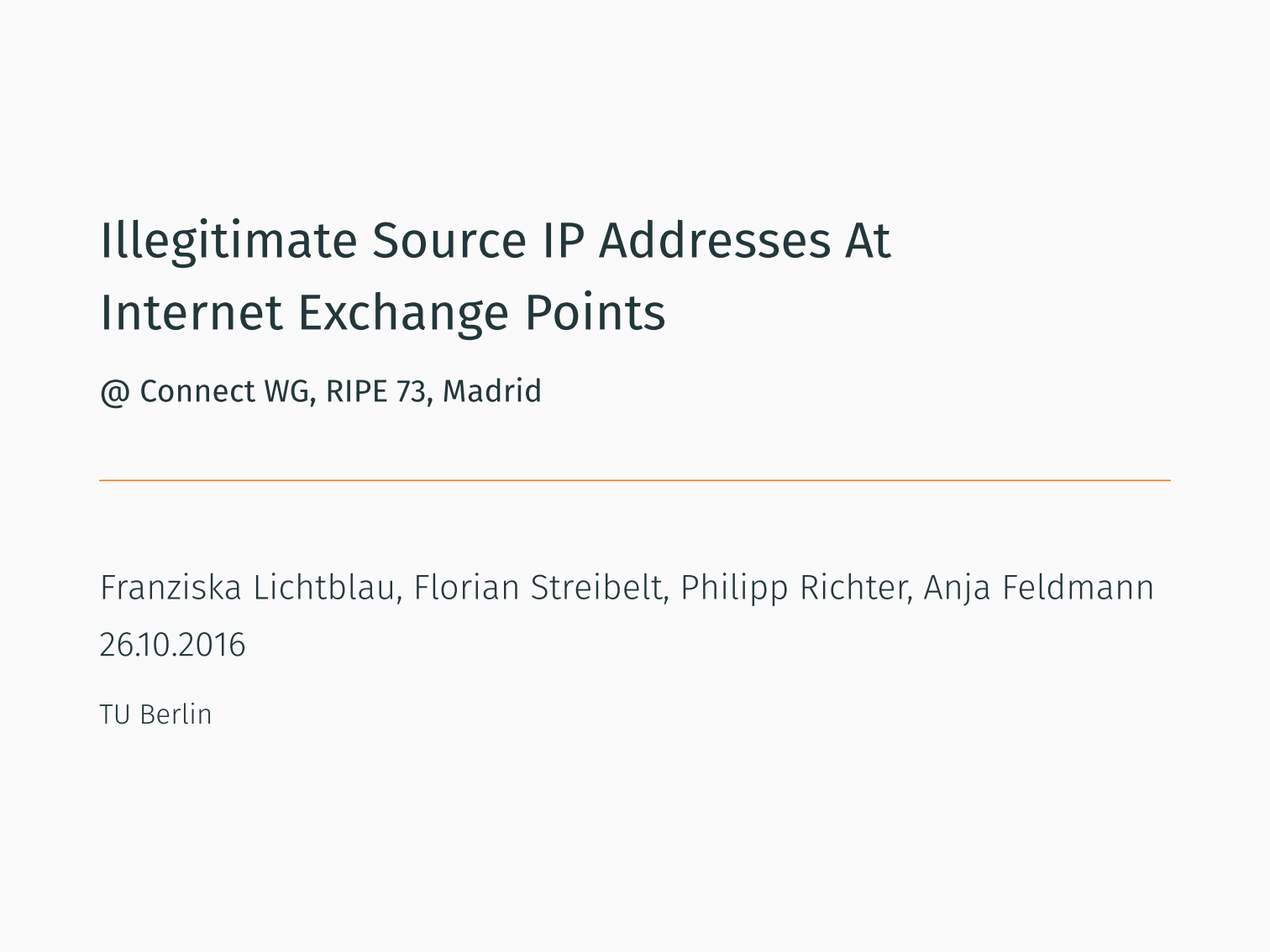| 6PE | IPv6 Provider Edge Router | |
| 6VPE | IPv6 Virtual Private Network Provider Edge Router | |
| ABC | Abstract Base Class | |
| ACE | Access Control Entry | |
| ACID | Atomicity, Consistency, Isolation, and Durability | |
| ACL | Access Control List | |
| ACPI | Advanced Configuration and Power Interface | |
| ADO | ActiveX® Data Objects | |
| ADSI | Active Directory Service Interfaces | |
| AF | Address Family | |
| AFI | Address Family Identifier | |
| AIC | Application Integration Component | |
| ANSI | American National Standards Institute | |
| ANSI SQL | American National Standards Institute Structured Query Language | |
| API | Application Programming Interface | |
| APM | Advanced Power Management | |
| APPC | Advanced Program-to-Program Communication | |
| ARP | Address Resolution Protocol | |
| ASA | Adaptive Security Applicance | Cisco |
| ASAv | Adaptive Security Virtual Applicance | Cisco |
| ASCII | American Standard Code for Information Interchange | |
| ASP | Active Server Pages | |
| ASR | Aggregation Service Routers | Cisco |
| ATL | ActiveX® Library Template | |
| ATM | Asynchronous Transfer Mode | |
| AXFR | Asynchronous Full Transfer Zone | |
| BASH | Bourne Again Shell | |
| BDC | Backup Domain Controller | |
| BDM | Business Development Manager | |
| BFD | Bidirectional Forwarding Detection | |
| BGP | Border Gateway Protocol | |
| BINL | Boot Information Negotiation Layer | |
| BIOS | Basic Input/Output System | |
| BLOB | Binary Large Object | |
| BSD | Berkeley Software Distribution | |
| CA | Certification Authority | |
| CAL | Client Access License | |
| CDFS | Compact Disk File System | |
| CE | Customer Edge Router | |
| CICS | Customer Interface Control System | |
| CIFS | Common Internet File System | |
| CIM | 1. Common Information Model
2. Computer Information Model | |
| CIP | Commerce Interchange Pipeline | |
| CLB | Component Load Balancing | |
| CLSID | Class Identifier | |
| CMOS | Complementary Metal Oxide Semiconductor | |
| COFF | Common Object File Format | |
| COM | Component Object Model | |
| COMAdmin | Component Services Administration | |
| CoPP | | |
| CORBA | Common Object Request Broker Architecture | |
| CPE | Customer Premise Equipment | |
| CRM | Compensating Resource Manager | |
| CSMI | CICS Mirror Transaction | |
| CSR | Cloud Services Router | Cisco |
| CSR-X | Carrier Routing System | Cisco |
| cSRX | | Juniper |
| CTM | Coordinating Transaction Manager | |
| DACL | Discretionary Access Control List | |
| DB | Database | |
| DBG | Debug Format | |
| DBMS | Database Management System | |
| DCOM | Distributed Component Object Mode | |
| DDF | 1. Distributed Database Facility
2. Data Decryption Field | |
| DDL | Data Definition Language | |
| DDM/DRDA | Distributed Data Management / Distributed Relational Data Access | |
| DDNS | Dynamic Domain Name Service | |
| DFS | Distributed File System | |
| DHCP | Dynamic Host Configuration Protocol | |
| DHTML | Dynamic HTML | |
| DLL | Dynamic-link Library | |
| DMI | Desktop Management Interface | |
| DML | Data Manipulation/Modification Language | |
| DMTF | 1. Distributed Management Task Force
2. Desktop Management Task Force | |
| DNA | Distributed InterNet Applications | |
| DNS | Domain Name System | |
| DPA | Demand Protocol Architecture | |
| DPL | Distributed Program Link | |
| DRF | Data Recovery Field | |
| DSA | Directory System Agent | |
| DSN | 1. Data Source Name
2. Domain Server Name | |
| DTC | Distributed Transaction Coordinator | |
| DTD | Document Type Definition | |
| DTS | Data Transformation Services | |
| DVD | Digital Video (or Versatile) Disk | |
| EAP | 1. Extensible Authentication Protocol
2. Early Adopter Program | |
| ECMA | European Computer Manufacturing Association | |
| EDI | Electronic Data Interchange | |
| EFD | Early Fast Discard | |
| EFS | Encrypting File System (Windows 2000) | |
| EGP | Exterior Gateway Protocol | |
| EHLLAPI | Extended HLLAPI | |
| EIGRP | Enhanced Interior Gateway Routing Protocol | |
| ELSA | Electronic Library Services and Applications | |
| EPN | | |
| ERP | Enterprise Resource Planning | |
| EX | | Juniper |
| EXE | Executable File | |
| FAT | File Allocation Table | |
| FEK | File Encryption Key | |
| FPNW | File and Print Services for NetWare | |
| FQDN | Fully Qualified Domain Name | |
| FIB | Forward Information Base | |
| FTP | File Transfer Protocol | |
| GC | Global Catalog | |
| GDB | GNU Debugger | |
| GINA | Graphical Identification and Authentication | |
| GIT | Global Interface Table | |
| GPE | Group Policy Editor | |
| GPL | General Public License | |
| GPO | Group Policy Object | |
| GRE | Generic Routing Encapsulation | |
| GSNW | Gateway Services for NetWare | |
| GSSC | Global Solutions Support Center | |
| GTM | Go to Market | |
| GUI | Graphic User Interface | |
| HA | High Availability | |
| HAL | Hardware Abstraction Layer | |
| HCL | Hardware Compatibility List | |
| HIP | High Impact Project | |
| HKCU | HKey_Current_User | |
| HKLM | HKey_Local_Machine | |
| HLLAPI | High Level Language Application Programming Interface | |
| HSM | Hierarchical Storage Management | |
| HTML | Hypertext Markup Language | |
| HTTP | Hypertext Transfer Protocol | |
| IANA | Internet Assigned Numbers Authority | |
| IDE | 1. Integrated Development Environment
2. Integrated Drive Electronics | |
| IDL | 1. Interface Description Language
2. Interface Definition Language | |
| IDOC | Intermediate Document | |
| IEAK | Internet Explorer Administrator Kit | |
| IETF | Internet Engineering Task Force | |
| IGP | Interior Gateway Protocol | |
| IID | Interface Identifier | |
| IIS | Internet Information Services (Internet Information Server) | |
| IME | Input Method Editor | |
| IMIX | | |
| IMS | Information Management System | |
| IOS | | Cisco |
| IOS XE | | Cisco |
| IOS XR | | Cisco |
| IOS XRv | | Cisco |
| IOS XRv 9000 | | Cisco |
| IP | 1. Internet Protocol
2. Intellectual Property | |
| IPC | Interprocess Communication | |
| IPFIX | | |
| IPSec | Internet Protocol Security | |
| IPX | Internetwork Packet eXchange | |
| IPv4 | Internet Protocol Version 4 | |
| IPv6 | Internet Protocol Version 6 | |
| IrDA | Infrared Data Association | |
| ISAM | Indexed Sequential Access Method | |
| ISIS | Intermediate System to Intermediate System | Juniper |
| ISO | International Organization for Standardization | |
| ISV | Independent Software Vendor | |
| ITIL | Information Technology Infrastructure Library | |
| ITS | Incompatible Time-Sharing System | |
| IXFR | Incremental Transfer | |
| IXP | Internet Exchange Point | |
| JDBC | Java Data Base Connectivity | |
| JIT | Just-in-Time | |
| JMS | Java Message Service | |
| JNDI | Java Naming and Directory Interface | |
| JRMI | Java Remote Method Invocation | |
| JTAC | Juniper Technical Assistance Center | Juniper |
| JTS | Java Transaction Service | |
| JUNOS | Junos Network Operating System | Juniper |
| KCC | Knowledge Consistency Checker | |
| KDC | Key Distribution Center | |
| KVM | Kernel-based Virtual Machine | |
| L2TP | Layer 2 Tunneling Protocol | |
| L2VPN | Layer-2 Virtual Private Network | |
| L3VPN | Layer-3 Virtual Private Network | |
| LAN | Local Area Network | |
| LCE | Loosely Coupled Events | |
| LDAP | Lightweight Directory Access Protocol | |
| LDP | Label Distribution Protocol | |
| LISP | List Processor | |
| LORG | Large Organization | |
| LPTS | Local Packet Transport Services | |
| LSA | Local Security Authority | |
| LU | Logical Unit | |
| LXC | Linux Containers | |
| MAC | Media Access Control | |
| MDAC | Microsoft Data Access Components | |
| MFI | Multiprotocol Label Switching Forwarding Infrastructure | |
| MGBL | | |
| MICR | Magnetic Ink Character Recognition | |
| MIME | Multipurpose Internet Mail Extensions | |
| MLV | Multilanguage Version | |
| MMC | Microsoft Management Console | |
| MOF | Managed Object Format | |
| MOM | Microsoft Operations Manager | |
| MORG | Medium-sized Organization | |
| MP-BGP | Multiprotocol Extensions for Border Gateway Protocol | |
| MPLS | Multiprotocol Label Switching | |
| MQS | Message Queue Series | |
| MRO | Maintenance Repair and Operations | |
| MSCS | Microsoft Cluster Service | |
| MSDE | 1. Microsoft Data Engine
2. Microsoft SQL Server 2000 Desktop Engine | |
| MSF | Microsoft Solutions Framework | |
| MSI | Microsoft Windows Installer | |
| MSMQ | Message Queuing | |
| MSP | 1. Managed Service Provider
2. Messaging Service Provider
3. Message Security Protocol | |
| MTA | Multi-threaded Architecture | |
| MTS | 1. Microsoft Transaction Server
2. Microsoft Technical Support | |
| MVS | Multiple Virtual System | |
| NAL | NetWare Applications Launcher | |
| NAV | Net Asset Value | |
| NCP | 1. Network Control Program
2. Network Control Protocol
3. NetWare Core Protocol | |
| NCS | | |
| NDIS | Network Driver Interface Specification | |
| NDPS | Novell Distributed Print Services | |
| NDS | NetWare Directory Service | |
| NFS | Network File System | |
| NFV | Network Forward Virtualization | |
| NGF | Next Generation Firewall | |
| NIC | 1. Network Interface Card
2. Network Adapter
3. Network Information Center | |
| NIS | Network Information Service | |
| NLB | Network Load Balancing | |
| NLS | National Language Support | |
| NNTP | Network News Transport Protocol | |
| NTLM | NT LAN-Manager | |
| NTP | Network Time Protocol | |
| NTW | New Technology Workstation | |
| NVT | Network Virtual Terminal | |
| OCR | Optical Character Recognition | |
| OCX | 1. OLE Custom Control
2. OLE Control Extension | |
| ODBC | Open Database Connectivity | |
| OLAP | Online Analytical Processing | |
| OLTP | Online Transaction Processing | |
| OMG | Object Management Group | |
| OO | Object Oriented | |
| OOAD | Object Oriented Analysis and Design | |
| OPP | Order Processing Pipeline | |
| ORB | Object Request Broker | |
| OS | Operating System | |
| OSPF | Open Shortest Path First | |
| OSTA | Optical Storage Technology Association | |
| OTM | Object Transaction Middleware | |
| PAC | Privilege Attribute Certificate | |
| PCL | Printer Control Language | |
| PCMCIA | Personal Computer Memory Card International Association | |
| PDC | Primary Domain Controller | |
| PE | Provider Edge | |
| PEC | Primary Enterprise Controller | |
| PG | Product Group | |
| PIE | | |
| PK | Primary Key | |
| PKI | Public Key Infrastructure | |
| PMI | Project Management Institute | |
| PnP | Plug and Play | |
| POS | 1. Programmable Option Select
2. Point of Sale
3. Point of Service
4. Packet Over Sonet
5. Persistent Object Server | |
| POSIX | Portable Operating System Interface | |
| PPP | Point-to-Point Protocol | |
| PPTP | Point to Point Tunneling Protocol | |
| PSS | Product Support Services | |
| PTM | Participating Transaction Manager | |
| PTR | Point-in-Time Repair | |
| PXE | Pre-boot Execution Environment | |
| QCE | Quality Customer Experience | |
| QEMU | Quick Emulator | |
| QFE | Quick Fix Engineering | |
| QoS | Quality of Service | |
| QvPC | QNAP virtualized Personal Computer | |
| OTT | Over-The-Top | |
| RADIUS | Remote Authentication Dial-In User Service | |
| RAID | Redundant Array of Independent Disks | |
| RAS | Remote Access Services | |
| RD | Route Distinguisher | |
| RDO | Remote Data Object | |
| RDP | 1. Remote Display (or Desktop) Protocol
2. Reliable Datagram Protocol | |
| RDS | Remote Data Services | |
| RFC | Request for Comment | |
| RIB | Routing Information Base | |
| RID | 1. Relative Identifier
2. Record ID | |
| RIP | Routing Information Protocol | |
| RIS | Remote Installation Services | |
| RM | Resource Manager | |
| ROLAP | Relational Online Analytical Processing | |
| RPC | Remote Procedure Call | |
| RPM | | |
| RR | 1. Resource Records
2. Route Reflector | |
| RSM | Removable Storage Management | |
| RSS | Remote Storage | |
| RT | Route Target | |
| RTL | Register Transfer Language | |
| RUP | Roaming User Profile | |
| SACL | System Access-Control List | |
| SAM | Security Accounts Manager | |
| SAN | Storage Area Network | |
| SAS | 1. Secure Attention Sequence
2. Serial Attached SCSI | |
| SCA | Security Configuration and Analysis | |
| SCE | Security Configuration Editor | |
| SCM | 1. Service Control Manager
2. Security Control Monitor | |
| SCSI | Small Computer System Interface | |
| SCTS | Security Configuration Toolset | |
| SD | Security Descriptor | |
| SDI | 1. Secure Dial-In
2. Single Document Interface
3. Smart Database Interface | |
| SDK | Software Development Kit | |
| SDN | Software Defined Networking | |
| SFU | Windows Services for UNIX | |
| SI | System Integrator | |
| SID | Security Identifier | |
| SIS | Single Instance Store | |
| SMB | Server Message Block | |
| SMS | Systems Management Server | |
| SMTP | Simple Mail Transfer Protocol | |
| SMU | | |
| SNA | Systems Network Architecture | |
| SNMP | Simple Network Management Protocol | |
| SP | Stored Procedure | |
| SPM | Shared Property Manager | |
| SR | Secure Router | Cisco |
| SRM | Security Reference Monitor | |
| SRX | | Juniper |
| SSD | Solid State Disk | |
| SSL | Secure Socket Layer | |
| SSO | Single Sign-on | |
| SSPI | Security Support Provider Interface | |
| SVID | System V Interface Definition | |
| SAA | System Application Architecture | |
| TAC | Technical Assistance Center | Cisco |
| TCE | Tightly Coupled Events System | |
| TCO | Total Cost of Ownership | |
| TCP/IP | Transmission Control Protocol/Internet Protocol | |
| TCT | Terminal Control Table | |
| TFTP | Trivial File Transfer Protocol | |
| TGS | Ticket-Granting Service | |
| TGT | 1. Transaction Group Type
2. Ticket Granting Ticket
3. Target Tracker | |
| TIP | Transaction Internet Protocol | |
| TLB | Type Library | |
| TLS | Thread Local Storage | |
| TM | Transaction Manager | |
| TP | Transaction Program | |
| TPD | Transactions Per Day | |
| TPH | Transactions Per Hour | |
| TPM | Transactions Per Minute | |
| TPS | Transactions Per Second | |
| TSA | Target Service Agent | |
| TTL | Time to Live | |
| UCS | 1. User Coordinate System
2. Universal Character Set
3. Unicode Conversion Support
4. Unified Communication Server | |
| UDF | 1. Universal Disk Format
2. User-defined function
3. Uniqueness Database File | |
| UDP | User Datagram Protocol | |
| UI | User Interface | |
| UML | 1. Unified Modeling Language
2. Universal Markup Language | |
| UNC | Universal Naming Convention | |
| UPN | User Principal Name | |
| URL | Uniform Resource Locator | |
| uRPF | | |
| USB | Universal Serial Bus | |
| USMT | User State Migration Tool | |
| USN | Update Sequence Numbers | |
| UTF | Unicode Transformation Format | |
| VAN | Value Added Network | |
| vCenter | | VMware |
| vCPE | Virtual Customer Premise Equipment | |
| vESA | | Cisco |
| VM | Virtual Machine | |
| vNAM | | Cisco |
| VNF | | |
| vPE | Virtual Provider Edge | |
| VPN | Virtual Private Network | |
| VRF | Virtual Private Network Routing and Forwarding Instance | |
| vRR | Virtualized Route Reflector | |
| VRRP | | |
| vSphere | | VMware |
| vSRX | | Juniper |
| vWLC | | |
| vWSA | | |
| vWAAS | | |
| VxD | Virtual Device Driver | |
| WAN | Wide Area Network | |
| WBEM | Web-based Enterprise Management | |
| WDM | Win32 Driver Model | |
| WFP | Windows File Protection | |
| WHQL | Windows Hardware Quality Lab | |
| WINS | Windows Internet Name Service | |
| WMI | Windows Management Instrumentation | |
| WQL | WMI Query Language | |
| WRED | | |
| WSH | Windows Script Host | |
| XA | Extended Architecture | |
| XDR | External Data Representation | |
| XML | Extensible Markup Language | |
| XML TI | XML Transaction Integration | |
| XSL | Extensible Style Language | |
| XSLT | Extensible Stylesheet Language Transformations | |
| Yang | | |
| ZAW | Zero Administration for Windows | |




